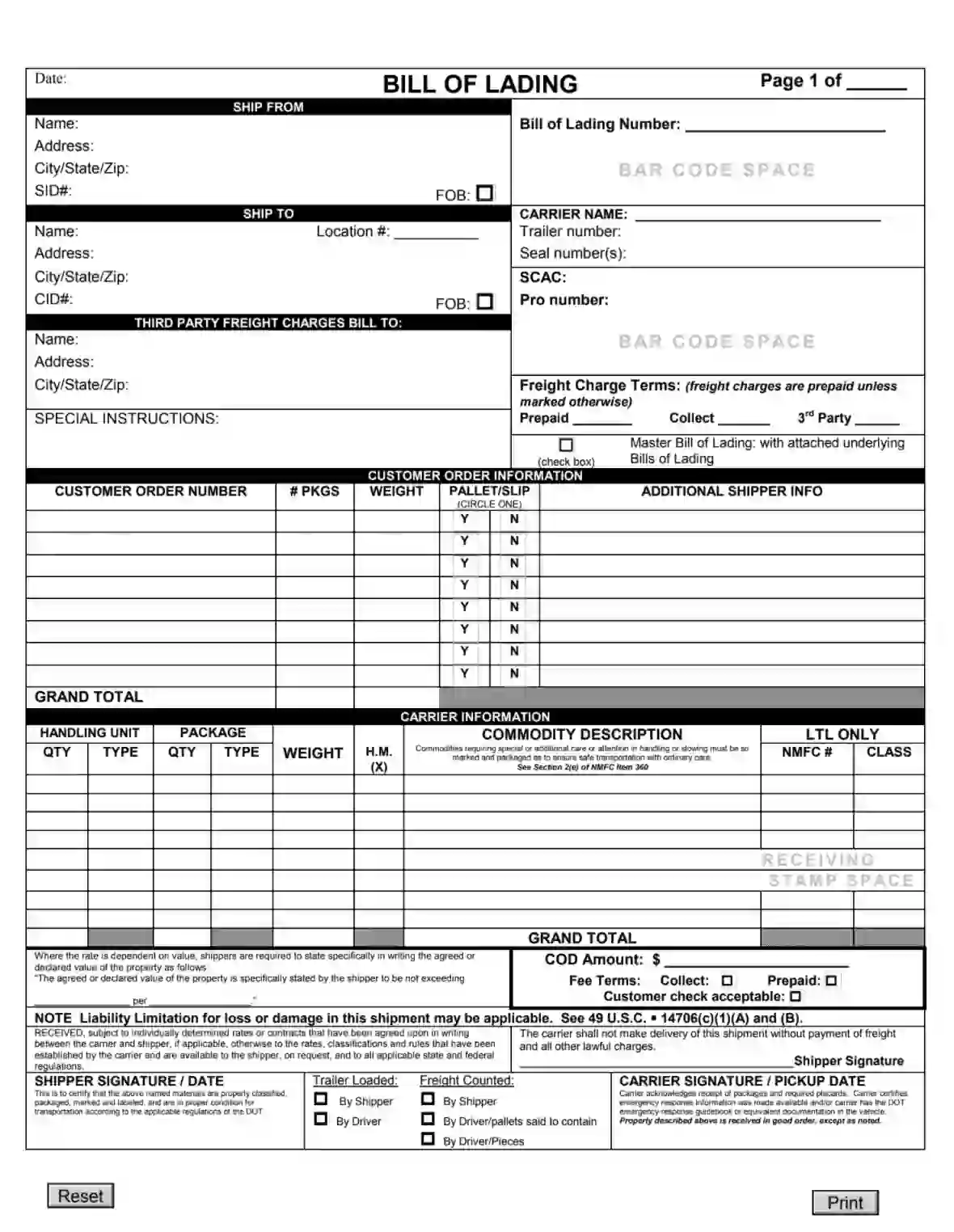A Bill of Lading Form is a legally binding document issued by a carrier to a shipper detailing the type, quantity, and destination of the goods being shipped. This document serves as a shipment receipt when the goods are delivered to the predetermined destination. It includes all necessary details, such as the sender and receiver’s names and addresses, the goods’ descriptions, the carrier’s name, and any additional transportation and delivery instructions.
The Bill of Lading is essential for tracking and managing shipments as it provides proof of the contract of carriage and outlines the specific responsibilities of all parties involved in the shipping process. This form is indispensable in international trade, where documentation and adherence to shipping protocols are rigorously monitored.
Other Financial Forms
If you want to find more financial documents for you to edit and fill out here, below are a number of the forms searched often by our users. Moreover, remember that you can actually upload, fill out, and edit any PDF at FormsPal.
How to Fill Out a Bill of Lading
Use our form-building software to create a bill of lading for your shipment. Read the following steps and follow our advice when filling out the form, so you should not have any issues. Any variation of the bill of lading could be created in the electronic format, and it would be as valid as paper ones.
- State the Date
Put the date of creating the bill of lading and indicate the page number.

- Provide Information About the Origin of the Goods
This means that you need to state where the goods are being shipped from. Include the name, the address, and the shipment ID (SID).

- Provide Information about the Destination
Here include the same details, as in the previous section, but for the receiver, with location and the receiver (consignee) number (CID). Pay attention to the FOB boxes. They are needed for indicating whether the liability for the goods has been passed from one party to the other.

- Bill a Third Party If Applicable
Many shippers add an invoice to bill a third party for the delivery. If this applies to your situation, include their details and any special instructions for billing them.

- Assign the Number to the Bill of Lading and Use the Barcode
Make sure that the bar code is not covered and is placed correctly.

- Provide the Carrier Name, the Trailer Number, and the Seal Number
The trailers should be sealed, and their number, together with the seal number, should be indicated in the bill of lading.

- State the SCAC and the Pro Number
Both of these are assigned to the carrier for their identification and tracking of the goods. There is also space for a bar code.

- Identify the Freight Charge Terms
Here the term “prepaid” refers to when the shipper has the responsibility to pay, and “collect” means that the consignee has the responsibility to pay. Note that you need to check the appropriate box if this is the main bill of lading related to several other bills of lading.

- Provide Customer Order Information
Here provide the numbers, as well as how many packages there are, their weight, whether slip or pallet sheets are used, and any additional information. You will also need to calculate the total number of packages and their total weight in this section.

- Provide the Carrier Information
State the number of units for loading, their type (a pallet or other), and the number and type of packages, as well as their weight and whether there is any hazardous material (see “H.M.” boxes in the form). Describe the commodity and fill out the “LTL only” section if your shipping is less-than-truckload (small freight).
You will need to look up the NMFC code from a codified list. Finally, the consignee will place their stamp in the same section when receiving the cargo. Do not forget to provide the grand total for the LTL freights too.

- State the Collect on Delivery Amount
COD (or Collect on Delivery) amount refers to the amount collected when the shipment has been made. Identify how it has been collected by checking the appropriate box.

- Let the Shipper Sign the Form
The shipper signs the form first to confirm that they acknowledge that the delivery should not occur without all charges paid.

The shipper should then sign and date the form again to confirm that they have provided accurate information in the sections above.

- Identify Who Has Loaded the Freight and Counted the Goods
Here tick the box defining the person who has performed each of the actions.

- Let the Carrier Sign and Date the Bill of Lading
Finally, the carrier should acknowledge that they have received the packages and that the commodity is in good condition.

